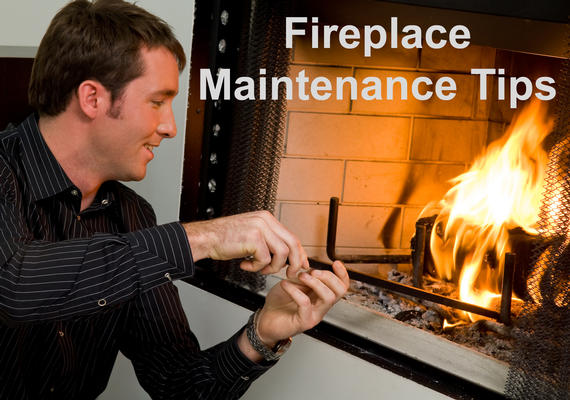
Fireplace Maintenance Tips
Using the fireplace in the evenings is a winter staple in some households. Sitting in front of a crackling fire with a mug of hot cocoa and a quilted blanket is the very image of the winter season. However, if you don’t properly maintain your fireplace, lighting a fire could result in disaster. How Chimney Fires Start
Chimney fires can burn explosively with flames or dense columns of smoke spouting into your home. They can also burn slowly and quietly for a long time before they are detected, eventually resulting in equally harmful effects on your chimney and home. However, chimney fires are highly preventable, and there is no reason to fear using your fireplace during the winter as long as you properly maintain it.
Fires occur when there is an excessive buildup of creosote inside the chimney flue. The by-products of combustion (smoke) drift up from the hot wood stove or fireplace into the cooler flue, where condensation occurs. As these substances condense, forming creosote, they may appear flaky, tar-like, or shiny and hardened. All forms of creosote may be present within a single chimney at the same time. Creosote is highly combustible and, if sufficient quantities are kept hot for a long period of time, it may result in a chimney fire. However, there are many preventative measures you can take to avoid chimney fires entirely.
Chimney Maintenance Tips
Only burn seasoned wood when building a fire. Burning a dry wood is more important than hard wood versus soft wood. Dry wood produces less smoke than wet wood. Along these lines, build your fires small and hot rather than large. This will also keep smoke production low.
During the holiday season, do not burn Christmas trees (including branches and needles) as the high volume of sap in fir and pine trees may cause explosions and flare ups in your fire. Also, do not burn cardboard boxes, gift paper, or trash. Chemicals in these items may be highly flammable and can cause similar problems. They may even release noxious gases into your home.
Finally, install a thermometer on your chimney flue to keep track of how hot it is internally. This can help you adjust your usage so you know you are keeping your home safe as well as warm.
Calling a Chimney Sweep
The Chimney Safety Institute of America recommends having your chimney inspected regularly, about once a year, by a professional chimney sweep. Your chimney sweep will pay special attention to the solid fuel venting system to ensure it is clear, and he will also note any repairs that need to take place.
Many houses in Pittsburgh have fireplaces because of the cold, snowy winters. If you plan on using your fireplace, make sure that you are following the proper safety practices to protect your home and family during the winter.





